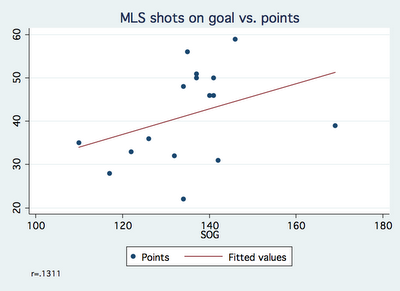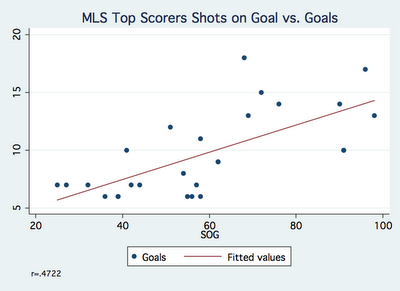Why We Shouldn't Put Much Value in Assists
Ford Bohrmann

Last week I wrote a post on why shots on goal are a misleading statistic. In keeping with the analysis of the problems with some commonly kept statistics in football, I decided to look at assists.
If you think about it, assists are highly misleading. Simply playing with good players boosts your assist total. Similar to shots on goal, not all assists are the same. There are the assists where a player makes a short pass in the midfield that leads to a teammate dribbling through all the opposing defenders and finishing, and the assists where a player makes a beautiful cross where their teammate simply has to tap the ball in the open net. These obviously shouldn't be counted as the same value to the team, yet they are. Hell, I could probably record an assist eventually in the EPL if I played for one of the top teams (OK, maybe an exaggeration but you get the point.)
First, let's look at the assists data for all the teams in the EPL league. As the graph below shows, as the point value of a team increases (basically, the better the team is) the assist total also generally increases. This is no surprise. We would expect better teams to score more goals and thus have more assist totals.

Basically what this means is that the assist statistic should favor players on better teams. Players on better teams play with better teammates and should therefore have more opportunities for assists. Below is a screenshot from the EPL website of the players with the top 20 assist totals.

9 players from top 5 clubs are in the top 20 for assist totals. No players from bottom 3 clubs are in the top 20, with the exception of Blackpool's Charlie Adam who was just signed by Liverpool. It's easy to see assists totals are higher for players on better clubs.
A better statistic that is not influenced by the quality of your teammates are chances created. A chance created is defined as a pass that leads to a shot. These are obviously not as dependent on your teammates and give a more fair and true assessment of how much of a playmaker that player is for their team.
The next time a club is looking to sign a player based solely on their assists totals, they should take a more in depth look. Assists can tell an inaccurate, or at the least biased, story.


